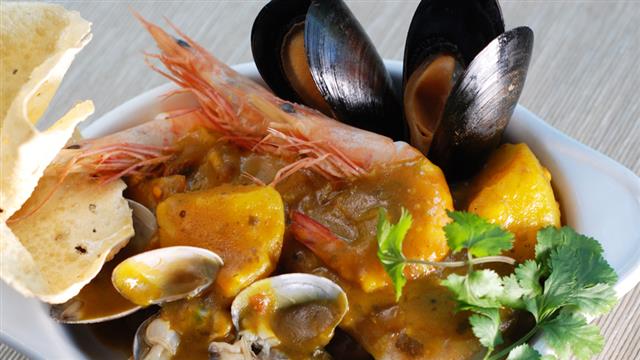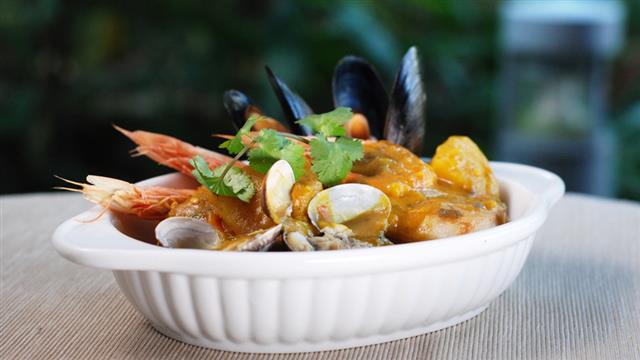Strictly speaking, there is no such thing as a 'curry' dish in India, but spicy dishes by their specific names: korma, rogan josh, vindaloo, dopiaza, etc. Perplexed by the mass of unfamiliar words, 17th-century European traders simply grouped them all under the term 'curry'. It has been in use ever since, and curry has become a global dish that continues to evolve.
Ms. Frances Kwan, head chef of Orchid Lodge, said the proper name of their 'curry' should be masala, which is made in a South-Indian style. She learnt the authentic recipe from an Indian cook when she was working in an international school. Every day the kitchen acquires 18 types of vegetable, that include carrot, onion, green pepper, tomato, turmeric, celery, Facing Heaven chilli, peppermint leaves, and coriander. They finely chop the ingredients, mix them with curry powder and stir-fry until the mixture is aromatic, then simmer for four hours until it becomes a pot of curry flavoured by vegetables.
The taste of the masala was pleasantly complex, and strong enough to numb the tongue and bring a burning sensation in the stomach. Ms. Kwan said it was the fresh Facing Heaven chilli doing the trick. Curry from South East Asia has a bit of sweetness, for it uses coconut milk, while Indian curry requires yoghurt which gives it a creamy texture and retains the intense flavour.
On top of the various benefits of curry, recent studies have suggested turmeric—a spicy ingredient of many curries—is an effective treatment for Alzheimer's disease. If you're a big fan of curry, you may be delighted to know that when you are satisfying your appetite, you are also doing your brain a great favour.



